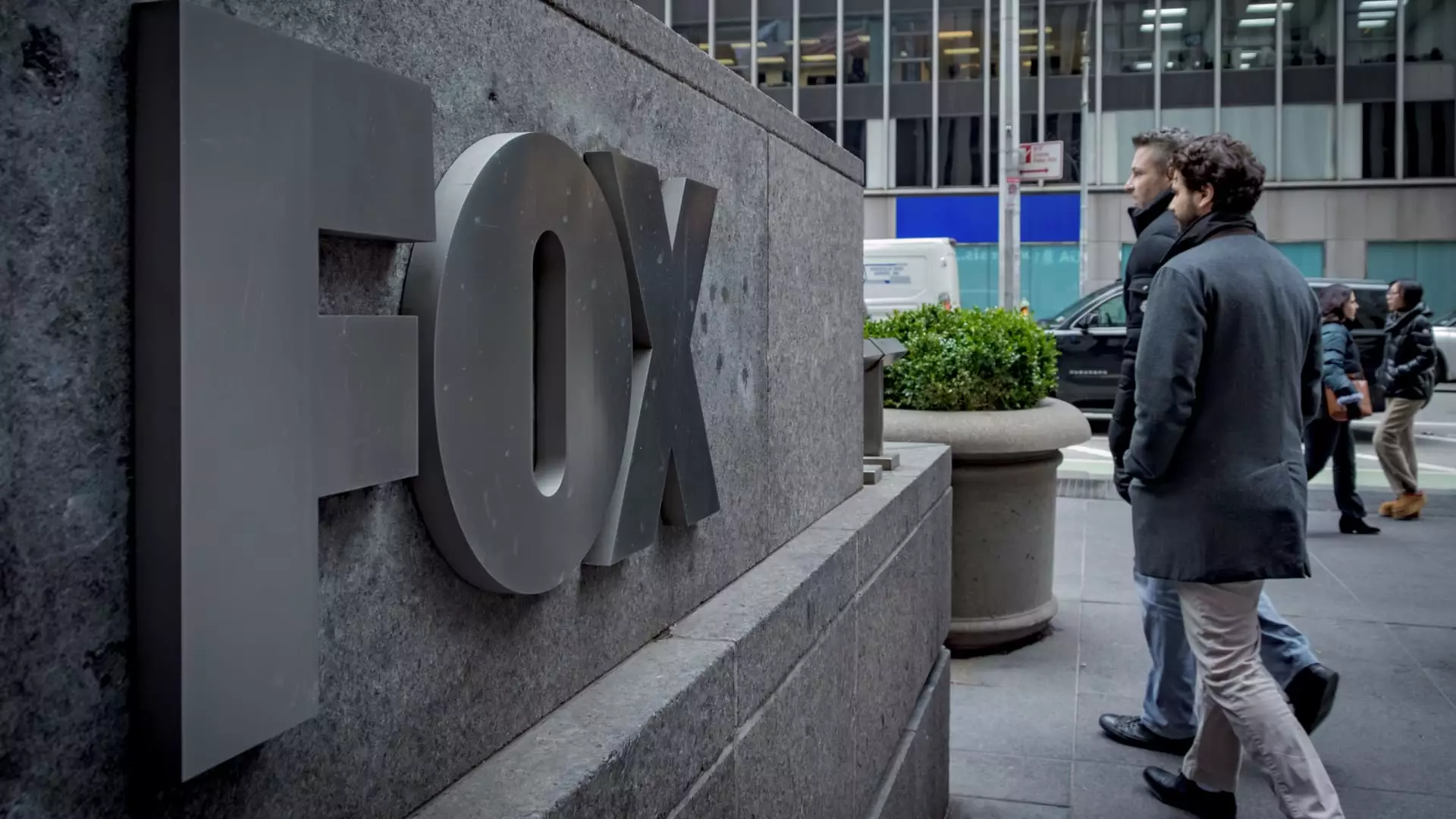In a bold move that seems to arrive with the pounding excitement of the NFL season, Fox Corp. is set to unveil its very own direct-to-consumer streaming service, aptly named Fox One. While the announcement of the launch has been made by CEO Lachlan Murdoch, the pause that followed—complete with ambiguous pricing details—leaves much to be desired. With an unveiling expected before the much-anticipated football season, one wonders whether this will be a brilliant stroke of foresight or merely a scrambling reaction to an ever-evolving media landscape.
The announcement was sweetened by promising revenue indicators; Fox reported a substantial $4.37 billion in quarterly revenue—a whopping 27% increase from the previous year. However, one must tread cautiously when interpreting these figures. The spikes were, in no small part, buoyed by extraordinary events like the Super Bowl, an occurrence that is hardly a sustainable model. The real question is whether Fox One can maintain traction without such monumental episodic boosts, especially when the streaming market is already inundated with established contenders.
A Cautious Approach to Pricing
Murdoch claimed that pricing would mirror traditional wholesale figures, emphasizing a reluctance to undercut existing cable subscribers. While this perspective on consumer loyalty may seem noble, it raises several critical questions: Is Fox so entrenched in its legacy that it can’t envision a world where competitive pricing is essential for attracting new viewers? The expected “healthy” pricing could alienate potential subscribers eager for cost-effective options. Rather than inviting exploration, might Fox One lock itself into a constricting pricing model that limits its accessibility?
Moreover, Murdoch’s insistence on preserving the traditional cable subscriber base appears to reflect a fear of losing relevance rather than a proactive attempt to innovate within the streaming realm. The statement “it would be a failure of us if we attract more connected subscribers” suggests a defensive posture rather than an exploration of the evolving media landscape. In today’s world, the unbending pursuit of legacy models without adaptation may prove to be a strategic misstep, pushing younger demographics away towards competitors who offer more flexible options.
The Streaming Landscape: A Competitive Fight
With the announcement of Fox One, one cannot help but compare Fox’s trajectory to that of its contemporaries. Companies like Warner Bros. Discovery and Disney have already forged ahead, offering their valuable sports content on streaming platforms such as Max and ESPN+. This begs the question: has Fox fallen behind, or has it merely taken a different path that may not yield the expected fruits?
The fervor surrounding Fox’s announcement may lead some to believe that they are joining the fight fully prepared. Yet upon deeper examination, Fox has stagnated while its competition has thrived. It was only last February when Fox dropped out of the collaborative sports streaming app Venu, effectively sidelining itself in a race it was previously meant to partake in. This decision signals a reluctance to innovate, raising brows about Fox’s commitment to harnessing the full potential of streaming.
Furthermore, other platforms have already adeptly cultivated their offerings, allowing consumers to consume sports on their own terms. Fox claims to have received interest from various other streamers about potential bundling relationships, but these alliances may merely serve as a bandage on a broader ailment—the company’s hesitant and tentative approach to embracing direct streaming offerings.
Future Uncertainty in a Crowded Market
As Fox prepares to step into the direct-to-consumer arena with Fox One, it does so amid a cacophony of competition. The streaming world is not kind to the unprepared; it is a space characterized by rapid changes, shifting viewer preferences, and unyielding demand for quality content. Fox’s current offerings, while popular, do not guarantee success in this new landscape.
Fox One needs to carve out a distinguishable niche; without it, there’s a looming threat of becoming just another voice lost within the turbulent, highly saturated streaming ecosystem. The company’s name recognition could be a strong asset, but without innovative features, compelling content, and—crucially—affordable pricing, what role will its legacy play?
The upcoming months will undoubtedly spark curiosity and anticipation as Fox One ultimately rolls out, yet the foundation upon which it stands appears shaky at best. Depending on how Fox navigates these treacherous waters, it could either emerge rejuvenated or falter under the weight of its hesitations. The game is on, and it remains to be seen whether Fox can keep pace or will become yet another cautionary tale in the story of media evolution.


Leave a Reply